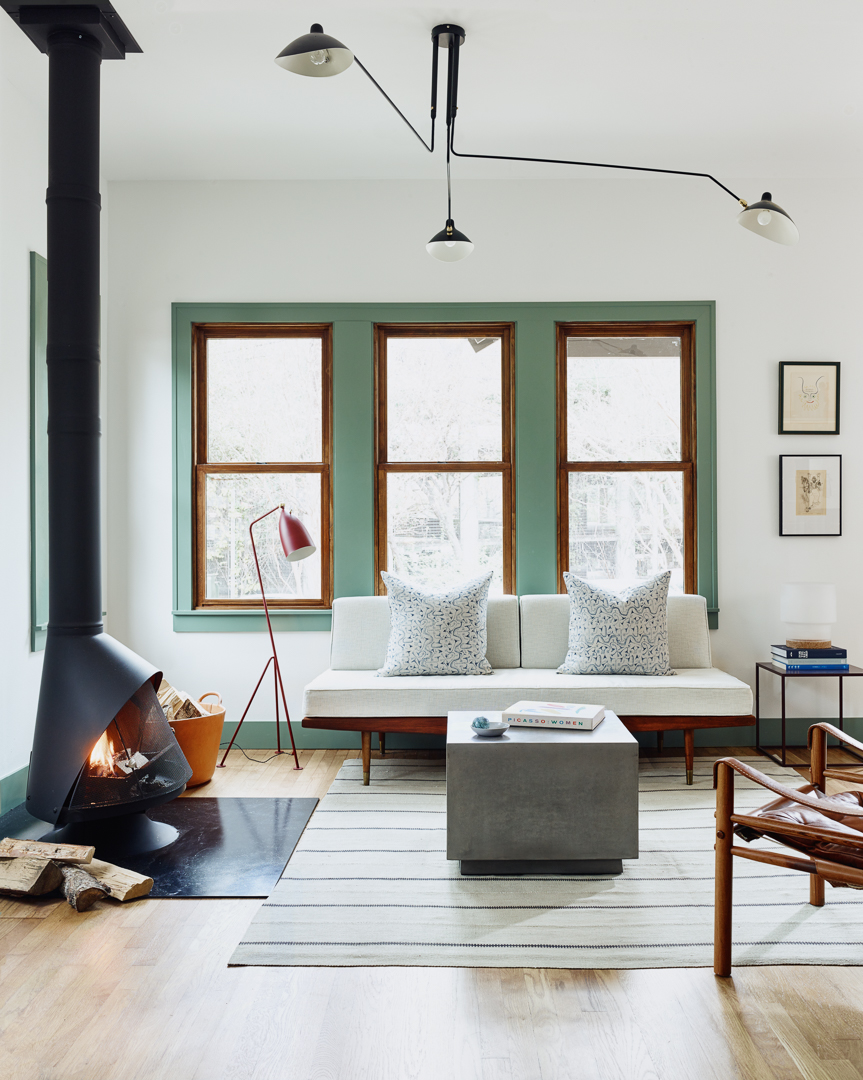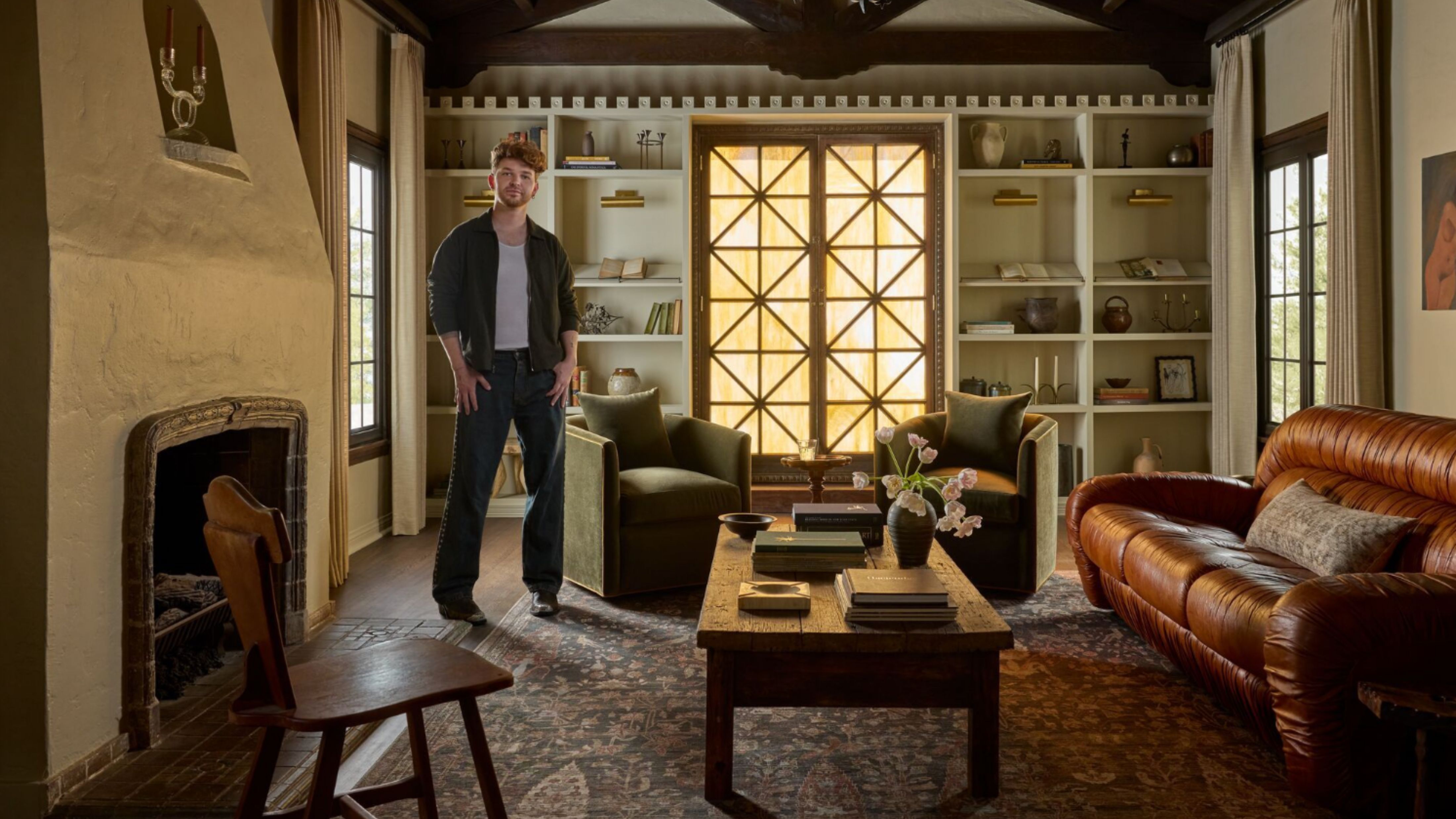How Long Does Paint Take to Dry? Ballpark Figures for Different Finishes and Conditions
Impatient to apply the next coat? Here's a breakdown of how long you really need to wait for paint to dry, according to decorating experts


When decorating to a deadline, the time it takes for paint to dry can feel like a lifetime. But whether it's how long you leave it between coats, or the final cure before decorating your space, there's a good reason to let your walls dry properly first.
The waiting game is an unavoidable part of the process of painting a room, but figuring out exactly how long you need to wait isn't so difficult. First up, identify the type of paint you need to use for a space. Is it water-based or oil-based? Do you want a matte or glossy finish? As for how long you'll need to wait between each coat — this depends on the type of paint you use, how you apply the paint, as well as the temperature and humidity in a room.
So to answer the question of how long paint takes to dry isn't a one-size-fits-all. Really, it depends — but we've broken it down by type, condition and more, so you know exactly when you get get on and finish your decorating project.
How Long Does It Take Wall Paint to Dry?

There are two primary paint types used throughout homes — these are: water-based paints and oil-based paints. Within these, there are also different paint finishes, such as: High-gloss, semi-gloss, satin, eggshell and matte.
Water-based paint: 1-2 hour drying time and wait 2-4 hours to apply second layer of paint.
Oil-based paint: 6-8 hours of drying time and wait 24 hours before applying second coat.
So, how long does it take wall paint to dry? Typically, the interior paint we use on our walls and ceilings is a matte finish, which is water-based. These usually take a few hours to dry and a second coat can be added between two to fours hours. However, oil-based paints can take six to eight hours and you should wait at least 24 hours before applying a second coat.
How long does it take water-based paint to dry?

Water-based paints are a great choice for paint ideas for walls, they are known to be durable, low on odor and easy to apply. Matte finish paints is the stalwart of the decorating world and they also come in some of the best paint colors. It gives a beautiful finish even on walls and ceilings that aren't perfectly smooth, plus it dries relatively quickly.
Ryan Parr, paint expert and founder of Nashville Painting Professionals says: "Water-based paints, such as latex and acrylic, typically take about 1 to 2 hours to dry to the touch. However, they usually require at least 4 hours before you can apply a second coat". But when it comes to full curing and when the paint reaches maximum durability, Ryan says this can take up to 30 days.
It's important to also consider the paint techniques for walls and how you apply the paint when using water-based paints. If you apply a large amount of paint in thick layers, naturally it will take a lot longer to dry — and you could be left with a patchy finish. Try to avoid this by using a paint roller to help give you a thin, evenly distributed finish.

Price: $146
Size: 1 Gallon
Finish: Dead Flat (Matte)

Price: $59.98
Size: 1 Gallon
Finish: Matte
Product Type: Behr Dynasty

Price: $146
Size: 1 Gallon
Finish: Dead Flat (Matte)
How long does it take oil-based paint to dry?

Oil-based paints used to be more common than they are now, and now often come in the form of gloss paint and are used on smaller details around the house such as trims, or cabinets and maybe even in certain areas of the bathroom or kitchen.
Oil-based paints are known to be tough, durable and stain resistant. But how long does it take for oil-based paints to dry?
"Oil-based paints generally take longer to dry," Ryan explains. "They usually require 6 to 8 hours to dry to the touch, and you should wait at least 24 hours before applying a second coat". For full curing, the paint expert says this can take up to 7 days.
How Can I make Paint Dry Faster?

If you're eager to start decorating — there are a few paint tricks for small rooms and larger rooms to use to help paint dry much faster.
Ryan says the first thing to look out for is air circulation. "Improving air circulation is essential for drying paint faster". For this, the expert recommends using fans to circulate air within the painted area. "Reducing humidity is equally important since high humidity levels can slow down the drying process. Using a dehumidifier can lower the room's humidity, thus speeding up the drying time," Ryan explains.
Another option to consider is the temperature of the space. Ryan tells us: "While increasing the temperature can help paint dry faster, it's important to avoid extreme heat, which can cause the paint to dry too quickly and potentially lead to cracking or uneven finishes. A moderate increase in temperature, such as using a space heater, can be beneficial".
Last but not least, the paint experts says the most effective method to make paint dry quickly is by applying thinner coats. "Thinner coats dry more quickly and evenly, allowing you to apply subsequent layers sooner. If you're in a hurry, you can also use a hairdryer or heat gun on a low setting to gently warm the painted surface," says Ryan. "Be sure to keep the device moving to avoid overheating any particular area, which can damage the paint".
Paint Drying Times Between Coats

Whether it's matte or gloss paint, it is important to follow the instructions set out by the paint brand you are using. This can often be found on the tin you purchase, but if you are struggling to locate it — head over to the paint brands website for more information.
"When considering the drying times between coats, it's important to note that oil-based paint generally requires about 24 hours to dry before another coat can be applied," Ryan tells us. "This extended drying time allows the paint to properly cure, ensuring a smooth, durable finish".
The paint expert notes that oil-based paints often have longer drying periods due to their chemical composition, which involves solvents that evaporate more slowly. "This slower process allows the paint to level out and adhere better, creating a harder, more resilient surface," Ryan adds.
As for water based paints he says: "water-based paints, also known as latex or acrylic paints, typically need only 4 to 6 hours between coats. These paints dry faster because their water content evaporates more quickly than the solvents in oil-based paints. The faster drying time makes water-based paints more convenient for projects that need to be completed quickly, as you can apply multiple coats in a shorter timeframe".
However, Ryan emphasises that it's crucial to ensure that the paint is completely dry before applying the next coat to avoid issues such as bubbling, peeling, or uneven paint finishes.
Does Paint Dry Faster in Heat or Cold?

Temperature is key it seems and paint expert Ryan tells us, "In warmer conditions, paint dries quicker due to the increased evaporation of water or solvents. However, excessive heat can lead to rapid drying, causing issues like cracking or uneven surfaces".
He continues: "Conversely, cold temperatures slow down the drying process, potentially resulting in longer curing times and a tacky or uneven finish. Painting in moderate temperatures is ideal for achieving optimal drying outcomes".
FAQS
What factors affect paint drying times?
• Temperature
• Ventilation
• Humidity
The conditions of the room in which you're painting will have also effect the time it takes for paint to dry. Ventilation is a given — windows and doors should ideally be open for the entire drying process.
Brandon Walker, a company construction manager at ASAP restoration and paint expert, tells us: "There are a wide variety of factors that influence dry times for paints. The kind of paint is a major determinant, but everything from the humidity to substrate material or temperature and even the barometric pressure can play a role in the dry time for paint formulations".
Extreme weather conditions can also be a huge factor, so try and avoid painting during peak summer time as this can cause the paint to dry out too quickly — which can in turn cause peeling and clumping.
How long should paint dry before using a room?
This depends on the type of paint that you use and it can differ between water and oil based paint.
The typical waiting time that is recommended is at least a week before you begin using a room. But, If you are looking to hang objects against your wall, ensure you wait 5-10 days.
Be The First To Know
The Livingetc newsletters are your inside source for what’s shaping interiors now - and what’s next. Discover trend forecasts, smart style ideas, and curated shopping inspiration that brings design to life. Subscribe today and stay ahead of the curve.

Faiza is the Renovation Editor at Livingetc. Faiza is currently renovating her small kitchen in her dainty apartment in London. Faiza previously worked for The Independent as a News Feature Writer, where she crafted lifestyle, entertainment, and news stories. She also worked as an Audience Editor for the newspaper for almost two years. Thriving in the busy newsroom, Faiza also spent her time crafting stories for Sky News as an SEO reporter, where she produced stories based on trending topics. Lifestyle and interior design is a space she has been interested in for quite some time, and as she blossoms in this field, she will continue to further her skills in design and gardening. Faiza has a background in SEO, social media, and reporting. Her passion for writing goes beyond her workm as she loves all things poetry and creative writing.
-
 Lone Fox's Drew Michael Scott Drops a Vintage Capsule with Joon Loloi (And Some Seriously Good Tips For Thrifting Antiques)
Lone Fox's Drew Michael Scott Drops a Vintage Capsule with Joon Loloi (And Some Seriously Good Tips For Thrifting Antiques)Sourced straight from one of the world's biggest antique shows, Drew shares how to stay sane, cut through the noise, and score what you actually want
By Julia Demer Published
-
 9 Easter Table Decor Ideas to Plan Now for Perfect Tablescapes This Season
9 Easter Table Decor Ideas to Plan Now for Perfect Tablescapes This SeasonFrom centerpieces and color schemes to tablecloths and seasonal themes, let these designer-approved ideas inspire your table styling this Easter
By Lilith Hudson Published